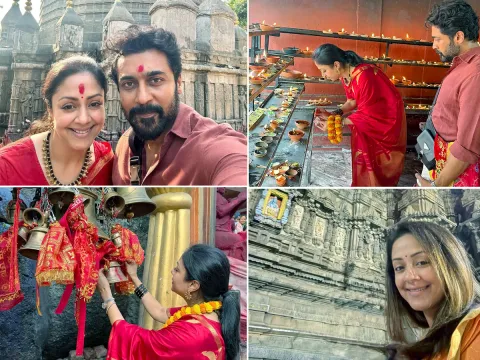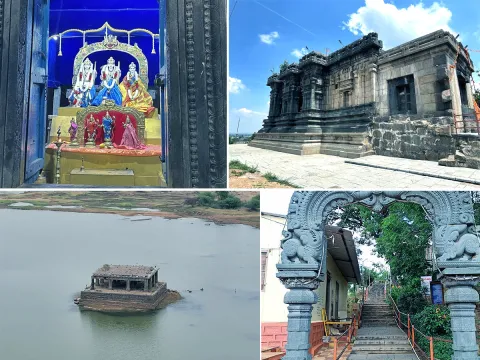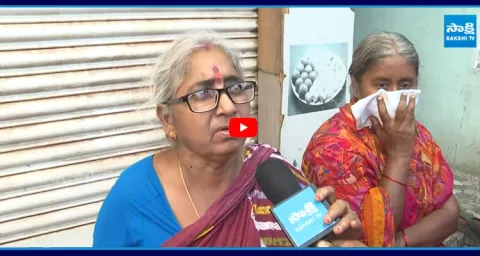
ముక్తుడైన సరీసృపాలు మరియు క్షీరదములకు చూపిన సాధారణ లక్షణాలు?
Diversity of living world, Structural organization in animals
EAMCET
Zoology
K. Srinivasulu
Sr. Faculty,
Sri Chaitanya
Educational Institutions,
Hyderabad
Diversity of living world, Structural organisation in animals
Animal diversity- I (invertebrate phyla)
1. The animal in which the space between the gut and the body wall is filled with mesenchyma is?
1) Echinodiscus 2) Enterobius
3) Eunice 4) Echinococcus
2. Study the following and choose the correct one:
LIST - I LIST - II LIST - III
(animal) (character) (class)
I. Sea urchin Aristotle's Echinoidea
lantern
II. Sea cucumber Respiratory Holothuroidea
trees
III. Sea biscuit Anus is Asteroidea
absent
IV. Sea stars Pedicellaria Ophiuroidea
with two jaws
1) II & IV 2) I & III
3) II & III 4) I & II
3. Match the following?
LIST - I LIST - II
A) Planula i) Unio
B) Trochophore ii) Hormiphora
C) Muller's larva iii) Rhizostoma
D) Cydippid larva iv) Arenicola
E) Glochidium larva v) Dugesia
A B C D E
1) iv v iii ii i
2) v iv ii i iii
3) iii iv v ii i
4) iii v i iii ii
4. Read the following?
I. Absence of clitellum
II. Presence of cirrus
III. Trochophore larva
IV. Parapodia with few setae
V. Limited number of gonads
VI.Absence of gonoducts
VII.Gonochoric
Which among the above are related to clam worm?
1) I, II & V 2) I, III, VI & VII 3) III, IV & VI 4) II, III & V
5. Arrange the following arthropodans in ascending order based on the number of legs they possess?
A) Julus B) Lepisma
C) Scolopendra D) Aranea
E) Limulus
1) B - D - E- C - A 2) B - D - E - A - C
3) B - E - D - C - A 4) D -B - E - C - A
6. Arthropods without antennae and with two pairs of antennae are respectively?
1. Crustaceans & Diplopodans
2. Crustaceans & Hexapodans
3. Chelicerates & Crustaceans
4. Arachnids & centipedes
7. Identify the correct order in the life history of Neometra?
1. Stalked Pentacrinoid––– Doliolaria––– Adult.
2. Stalked Pentacrinoid––– free swim-ming ophiopleuteus––– Doliolaria ––– adult.
3. Doliolaria ––– sessile Pentacrinoid––– Adult.
4. Doliolaria–––Pentacrinoid–––Brachio-laria–––Adult.
8. Study the following characters of echinoderms.
A) Coriaceous skin
B) Mouth is surrounded by retractile ten-tacles
C) Loose spicules in dermis
D) Absence of Madreporite
E) Two jawed pedicellariae
F) Tube feet without suckers
Which of the above belong to sea cucumbers?
1. A, B, C only 2. All except E 3. B,C,F only 4. All the above
9. Match the following
LIST - I (animal) LIST - II (character)
A) Spirostreptus I) Stomochord
B) Convoluta II) Captacula
C) Pontobdella III) Colloblasts
D) Pulsellum IV) Botryoidal tissue
E) Ptychodera V) Rhabdites
F) Pleurobrachia VI) Gnathochilarium
VII) Crystalline style
A B C D E F
1) VI IV V III II I
2) VI V IV II I III
3) V I VII II III IV
4) IV III II V VI I
10. Types of nephridia which are present in the segments with blood glands in Phe-retima?
1) Closed & enteronephric type
2) Open & enteronephric; closed& exone-phric type
3) Closed & enteronephric; closed & exo-nephric type
4) Open & exonephric; closed & entero-nephric
11. Correct combination(s) among the following related to the phylum Arthro-poda
Class Character Example
I. Crustacea statocysts Sarcoptes
II. Xiphosura Trilobite larva Limulus
III. Diplopoda poison claws Julus
IV. Chilopoda malphighian Scutigera
tubules
V. Hexapoda Tracheae Lepisma
1) I, II & IV 2) II, IV &V
3) II, III & IV 4) All except I
12. Role of calciferous glands present in the wall of stomach in Pheretima is
1) Digestion of calcium
2) Elimination of calcium
3) Neutrilisation of humic acid of soil
4) Absorption of silicates
13. Assertion A: Growth of nematodes occurs mainly by the increase in the cell size rather than cell number.
Reason R: Nematodes show eutely.
1) Both A and R are true and R is the correct explanation to A.
2) Both A and R are true but R does not explains A.
3) A is true but R is false
4) A is false but R is true
14. Read the following
I) Three jawed pedicellariae
II) Aboralmadreporite
III) Tube feet without suckers
IV) Rigid test/corona
V) Absence of arms
VI) Openambulacral grooves
Which of them belong to the echi-noderms with Aristotle's lantern?
1) I, III, IV & V 2) II, III, IV & V 3) I, II, IV, V 4) All except I
15. Which of the following feature of striped and involuntary muscles help them to show highly resistant to fatigue?
1) Few molecules of myoglobin 2) Intercalated discs
3) Numerous sarcosomes 4) Numerous sarcomeres
Answers
1) 4 2) 4 3) 3 4) 2 5) 1 6) 3 7) 3 8) 1 9) 2 10) 3 11) 2 12) 3 13) 1 14) 3 15) 3
Animal Diversity - II (chordata), Locomotion & Reproduction, Biology in Human welfare
1. Assertion A: Study of the larval features is necessary to establish taxonomic position of ascidians.
Reason R: Ascidian larva shows retrogre-ssive metamorphosis.
1) Both A and R are correct and R explains A
2) Both A and R are correct but R does not explains A
3) A is true but R is false
4) A is false but R is true
2. Read the following
I. Nerve cord in chordates is formed by the sinking of median dorsal strip of endoderm above notochord in embryo-nic stage.
II. Coelom is secondarily schizocoelic in higher chordates like vertebrates.
III. Occurrence of functional pharyngeal pouches in the early embryonic life of amniotes provides a clue to their aquatic ancestry.
IV. Nerve cord is single, dorsal, tubular and ganglionated in chordates while it is ventral, double solid and non gangli-onated in non-chordates.
V. Notochord is made up of a core of vacuolated cells surrounded by an inner sheath of fibrous and outer elastic connective tissue sheaths.
VI. Post anal tail in chordates consists of coelom and visceral organs.
Correct statements are
1) II & III only 2) II & V only 3) III, IV & V 4) I, IV & V
3. Match the following
LIST - I LIST - II
A) Betta splendens I) Angel fish
B) Carcharodon II) Sucker fish
C) Exocoetus III) Siamese fighting fish
D) Echeneis IV) Greatwhite shark
E) Pterophyllum V) Flying fish
VI) Hammer-headed shark
A B C D E
1) I III V II VI
2) II IV III V I
3) III IV II V IV
4) III IV V II IV
4. Assertion A: Continuous oxygenation of blood and pneumaticity of bones is possible in birds.
Reason R: Birds have compact, spongy, undistensible lungs without alveoli
1) Both A and R are true but R is not the correct explanation to A
2) Both A and R are true and R is the correct explanation to A
3) A is true but R is false
4) A is false but R is true
5. Which of the following show discon-tinuous distribution?
1) Monotremes, marsupials, lung fishes and birds of palaeognathae
2) Marsupials, lung fishes and birds of ratitae
3) Lung fishes, rhynchocephalians and birds of palaeognathae
4) Monotremes, lung fishes and lizard bird
6. Common features shown by glorified reptiles and mammals?
1) Absence of renal portal system, larynx as voice box, enucleated RBCs
2) Amphiplatyon vertebrae, presence of left systemic arch only
3) Monocondylic skull, reduced renal portal system, atrophied right ovary and oviduct.
4) Metanephric kidney, absence of sinus venous and conus arteriosus, double headed ribs.
7. Mammals with six cervical vertebrae are
1) Bradypus & Choloepus
2) Trichechus & Pteropus
3) Trichechus & Choloepus
4) Macropus & Pteropus
8. Match the following
LIST - I LIST - II
A. Pteropus I) Flying fish
B. Draco II) Flying frog
C. Exocoetus III) Flying fox
D. Rhacophorus IV) Flying lizard
A B C D
1) IV III II I
2) III IV I II
3) II I III IV
4) III IV I II
Answers
1) 1 2) 2 3) 4 4) 1 5) 2 6) 4 7) 3 8) 4














